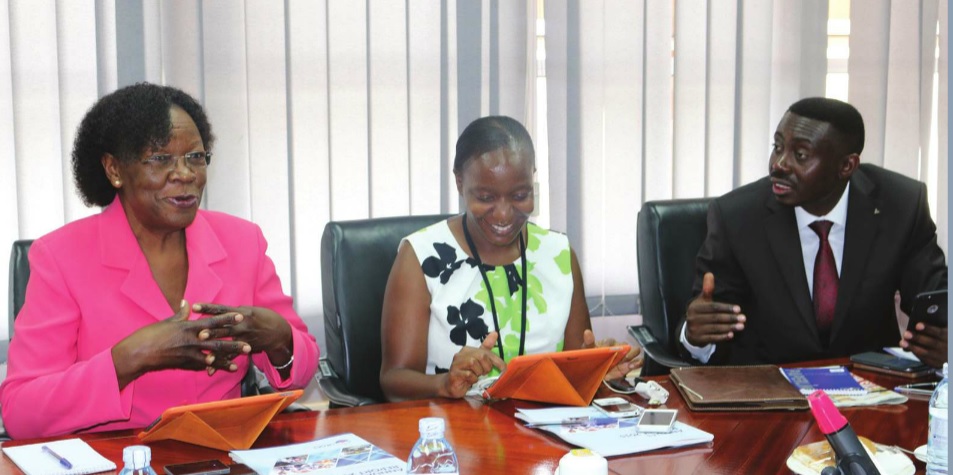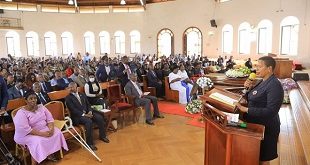
UEGCL: Company injects Shs 500bn into Karuma, Isimba dam construction
The Uganda Electricity Generation Company Ltd (UEGCL) has finally broken its longstanding loss-making trend and registered a substantial profit. According to their 2015 performance report issued at the annual general meeting on Sept.15, the company announced a net profit of Shs 13.5 billion in 2015, a huge leap from a loss of Shs 9.5 billion in 2014.
Incorporated by the Finance ministry in 2001 as a public limited company following the unbundling of Uganda Electricity Board, UEGCL is charged with generation of electricity with some of its main assets being the Nalubaale (180MW) and Kiira (200MW) power stations in Jinja. The two facilities are being managed by Eskom, a South African company, which took charge of them under a 20-year concession that will end in the next six years. The annual report indicates that UEGCL posted revenue of Shs 63.5 billion in 2015 up from Shs 8.4 billion in 2014.
This growth was driven by a strong exchange rate gain of Shs 1.2 billion, a government grant of Shs 8 billion for the supervision of the construction of the Karuma and Isimba hydro power projects, a write back of government liabilities inherited at incorporation amounting to Shs 36 billion, and another write back worth Shs 6.1 billion as provision for tariff stabilisation.
The company’s earnings before interest, tax, depreciation, and amortization (EBITDA) consequently increased to Shs 25.2 billion in 2015 from Shs 3.1 billion in 2014. Company assets as at Dec. 31 stood at Shs1.0 trillion thanks to an injection of Shs 552 billion for works being done on Karuma and Isimba power projects. Cash generated from operations stood at Shs 17.6 billion in 2015 compared to just Shs 233 million in 2014.
Finance Minister Matia Kasaija commended the board and management for the transformation of UEGCL into a profit making entity. “I salute the Chairman and the Board for a job well done. UEGCL is one of the top performing parastatals,” he said.
In 2015, the concessionaire invested Shs 8.7 billion in the power plants increasing total cumulative investments to Shs 50.4 billion since they took over.
As part of its business growth and diversification process, UEGCL embarked on the acquisition and diversification of generation assets, which include exploration of new hydro power sites such as Okulacere (6.5MW), Latoro (4.2MW) Agbinika (2MW) and Maziba (1MW) as well as solar and geothermal prospects.
In its future outlook the company is looking at building on the achievements of 2015 with the main focus being on increasing the generation capacity, growth and revenue.
It also plans to refurbish the Nalubaale power station and to prepare to take over the Nalubaale and Kiira power station operation and maintenance as the concession of Eskom is due to expire in six years.
In 2015, UEGCL also acquired its own office premises at Kamwokya with a threeyear mortgage of Shs 807 billion from Stanbic Bank. Kasaija also commended the board for this saying it had saved the government “a huge rent bill.”
Board Chairman Stephen Isabalija, whose board was given another three-year mandate, said they had an “unwavering commitment” to deliver on the government flagship projects of Karuma (60MW) and Isimba (183MW) hydro power dams on schedule by 2019, within budget and to agreed specifications. UEGCL is also the implementing agency for Muzizi and Nyagak power projects.
In 2014, the auditor general raised concern that while UEGCL has the right to bill Eskom for depreciation, return on equity, and administrative costs, it only bills for administrative costs as approved by the ERA implying that UEGCL may not be able to generate enough revenue to recover the carrying amount for the two power dams.
When an impairment assessment was carried in March 2015, it showed an impairment loss of Shs 138 billion, which has never been captured in UEGCL’s books of accounts, and which implies that the assets and profit balances have been overstated. The government declined to make the adjustment fearing that it would be transferred to the final consumer in terms of higher tariffs.
Isabalija told the AGM that the operations and maintenance of the new power stations would be managed by UEGCL, which he said would be pivotal to the efficient and cost-effective delivery of electricity, as this component forms an invaluable input in the tariff build up.
UEGCL’s work is already cut out. Uganda’s hydroelectric power potential is estimated at over 2000MW, though available statistics indicate that the country has electricity generation per capita of 74.5 kWh compared to Kenya’s 168 kWh, the SubSaharan average of 488 kWh, and a global average of 3,100 kWh.
In July, UEGCL took over management of the IMWMaziba mini hydro station almost 15 years after the plant stopped operating. Up to $2.5m (about Shs 8.7bn) is needed to rehabilitate and upgrade the power station. The station is expected to be up and running by 2019.
Official estimates show that given the per capita target of 578 kWh, a population growth of 3% annum, and allowing 18% system losses and a system load factor of 69%, UEGCL will have to ensure the generation of 4,800 MW by 2020. To attain middle income status (745 kWh per capita), Uganda will need 6,200 MW installed capacity by 2020.
****
editor@independent.co.ug
 The Independent Uganda: You get the Truth we Pay the Price
The Independent Uganda: You get the Truth we Pay the Price


